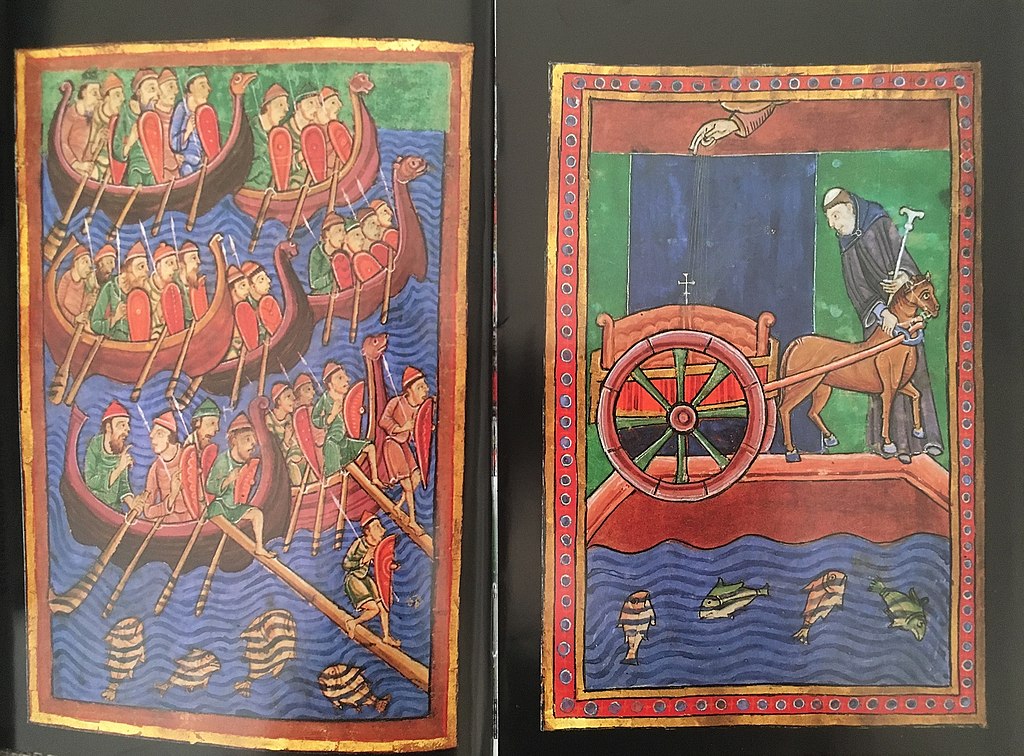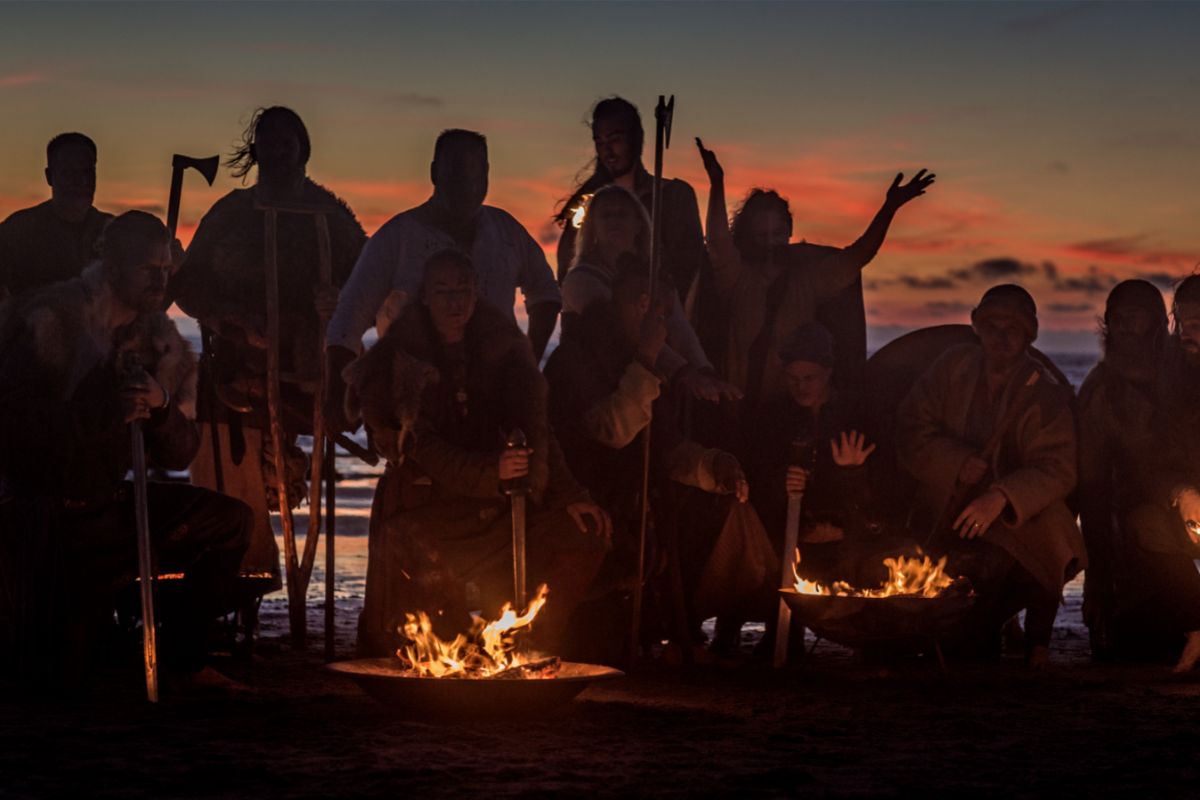The TV series characters Ragnar Lothbrok, Ivar the Boneless, Floki and Bjorn Ironside all existed, however, there are a number of historical inaccuracies as well.
The phenomenal success of the History Channel TV show Vikings, Game of Thrones, Lord of the Rings, and Thor’s impact in the Marvel Universe has provoked huge interest in Norse mythology.
One of the first things fans search for is whether the characters they see onscreen are, in fact, real people. They also ask how closely the show reflects what actually happened all those hundreds of years ago.
Vikings’ first airing was on the History Channel and Amazon Prime Video back in March 2013, and few could have predicted the huge interest it would generate and that there would even be a spin-off, Vikings: Valhalla. Its sixth and final season premiered in December 2019.
*Make sure to check out my article about the best and worst Viking-based movies and TV shows of all time!
Is There Proof Of Ragnar Lothbrok’s Existence?
Evidence suggests Ragnar Lothbrok (played by Australian actor Travis Fimmel in the show) existed, but it is scarce. Two references to the feats of a Viking raider around 840 AD appear in the collection of documents called the Anglo-Saxon Chronicle.
They mention two characters, Reginherus and Ragnall, who are considered the basis for Ragnar Lothbrok. This Viking chieftain led raiding parties along the coasts of England and France.
Old French chronicles report his death at the hands of the Franks, but Saxo Grammaticus tells of Ragnar also raiding parts of Ireland a few years later.
Was There A Real Floki?
Floki, played by Gustaf Skarsgård (brother of Alexander), is based on a real Norseman called Hrafna-Flóki Vilgerðarson.
Vilgerðarson, born about 830 AD, was the first Viking to settle in Iceland.
Was Ivar The Boneless Real?
According to texts in Old Norse and medieval Latin, Ivar the Boneless (or Ívarr Hinn Beinlausi in Old Norse) was the son of Ragnar Lothbrok. Ivar was also known as Ivar Ragnarsson.
In 865 AD, Ivar (played in the TV show by Danish actor Alex Høgh Andersen) formed and became the chieftain of the Great Heathen Army, which invaded the Anglo-Saxon Heptarchy of the seven kingdoms of East Anglia, Essex, Kent, Mercia, Northumbria, Sussex, and Wessex.

Was There A Real Bjorn Ironside?
Björn Ironside (played by Canadian actor Alexander Ludwig) was also one of Ragnar’s sons. His mother was the famous völva called Aslaug, not Lagertha (played by Canadian actress Katheryn Winnick), as in the TV show.
Björn Ironside was the first ruler of Sweden’s earliest attested royal dynasty, the Munsö dynasty. This dynasty is so-called because of its location in the village of Munsö, near Stockholm.
Is There A Real Kattegat?
A geographical feature called Kattegat does exist, but it is not a town in Norway. It is a strait of water between Denmark and Sweden, around 90 miles in breadth at its widest point.

Which Parts Of Vikings Are Legends Or Myths?
English screenwriter Michael Hirst’s show is generally well-researched and accurately portrays what Viking life was like. However, there are a few historical untruths.
Vikings Season 1, Episode 2
Ragnar and Rollo (played by English actor Clive Standen) sail west to the island of Lindisfarne off the coast of Northumbria, England, and attack the monastery. The history books tell us this raid happened in 793, and no Vikings were involved.
The character Athelstan (played by English actor George Blagden), who Ragnar takes prisoner, is also fictitious.
Season 3, Episode 6
When Floki kills Athelstan, he is taken to a cave, bound, and tortured by water dripping from the ceiling and onto his face.
In Norse mythology, Loki is bound and imprisoned in a cave while venom from a snake held above him drips onto his face.
Season 3, Episode 10
Rollo and the West Frankish king Charles make a treaty in this episode. This agreement also appears in historical chronicles.
However, records show it happened in 911, more than 100 years after the attack on Lindisfarne.
Season 4, Episode 11
Ragnar tries to hang himself, but an “unkindness” of ravens peck through the rope, and he survives.
This hanging mirrors Odin’s actions when he hanged himself from the world tree Yggdrasil because he believed it would make him worthy of knowing runic magic.
Odin was also associated with ravens, often depicted with two of them – Huginn and Munnin – flying around him.
Other Notable Accuracies And Inaccuracies
Although some of the events in the TV show are incorrect, the part about some geographical regions such as West Francia and Wessex played during the Viking era is.
As mentioned, Lagertha, although she appears in the Tale of Ragnar Lothbrok, is not an earl or Bjorn Ironside’s mother. However, the saga depicts her as a fierce warrior, exactly as described in the TV drama series.
The character Harald, played by Finnish actor Peter Franzén, is loosely based on the Norwegian king Harald Finehair.
The central character in Vikings: Valhalla is Leif Erikson, a real Viking-age explorer.
Earl Haraldson is based on Erlend Haraldson, who was joint Earl of Orkney from 1151 to 1154, according to the Orkneyinga Saga.
King Ecbert of Wessex was a regional English king from 802 to 839. His son, King Aethelwulf, “Noble Wolf” (played by Irish actor Moe Dunford), took over and ruled the same kingdom from 839 to 858. However, he died of natural causes in real life and not of a bee sting, as portrayed in the series.
It is unlikely the Seer was based on a particular character in Norse mythology. There are plenty of accounts of soothsayers in Norse mythology, particularly associated with the female-dominated magic called “seiðr.”
What Is The Most Historically Accurate Viking Show?
The Last Kingdom, a British TV series based on The Saxon Stories by Bernard Cornwell, is most faithful to historical events. However, it is fiction, and its story and characters are adapted to a script and chain of events conveniently arranged to form a dramatic timeline.
The events are mostly true, and Cornwell pays particular attention to the authenticity of the fighting styles and battle depictions.
The Last Kingdom and Vikings: Valhalla are available on Netflix. You can still watch Vikings on Hulu and HBO Max.

